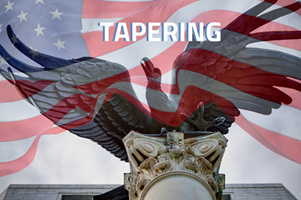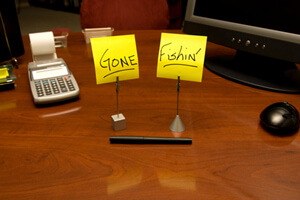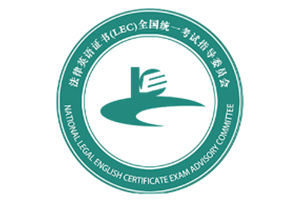Why Gooseneck Barnacles Are So Expensive
Narrator: Stevie Dennis is harvesting a cluster of gooseneck barnacles, one of the most expensive seafoods in the world. Just 1 pound can cost over $100 in Spain and Portugal, where the barnacles are considered a delicacy. That’s about seven times the price of some Maine lobster. But getting your hands on these barnacles is harder than it seems. The job comes with serious risks, and even the possibility of death. So why are gooseneck barnacles so difficult to harvest? And is this what makes them so expensive?
Gooseneck barnacles, also known in Europe as percebes, have a long, fleshy stalk called a peduncle, which holds the highly sought-after meat you can eat. People say it tastes like lobster, crab, or clam. They grow in intertidal zones, including in Spain, where an average of five people die trying to harvest them each year. They also grow here, off the coast of Vancouver Island.
The danger of harvesting this seafood begins before Stevie and his partner, Jordan, even reach the small rock island where the barnacles grow. The 15-minute boat ride off the coast starts off smooth. But wait a little longer, and the waves will be thrusting high as Stevie attempts to make the leap from the boat onto the rocks. Stevie’s only able to harvest at low tide, when he can access the rocks. He can harvest only as long as the tide will allow him, which is just a few hours a day. Outside of this limited window, the barnacles are covered by water and too dangerous to harvest.
Jordan White: It’s not like you have a full eight-hour window to go harvest as many goosenecks as you can. You have this very short window, and you’re going to try and capitalize on that.
Narrator: It’s essential for Stevie to do the job fast, but carefully. He harvests while constantly checking the tide. One slip, and the waves could take him under.
Jordan White: It just boils down to skilled labor. You know, it’s…it’s not a job that anyone can do. Especially when you’re working with, you know, a small team of people, you want to have full trust that, you know, both individuals can drive a vessel; both individuals can harvest. You have each other’s back out there.
Narrator: To add to the risks, the most prized barnacles thrive in the most dangerous spots on the island. These ones are denser and packed with meat. And they grow on the edge of the rocks, where the waves are constantly thrashing against them. The barnacles here must feed more often so they can grow bigger to withstand the surf, which is how they’re able to cling more tightly to the rocks. But this also makes them especially difficult to remove. Stevie uses a leaf spring tool to pry out clumps of gooseneck barnacles.
Stevie Dennis: My uncle gave it to me. He used to harvest goosenecks.
Narrator: At times, he uses his hands to pull them out one by one. While worrying about his own safety, Stevie must also be careful with how he harvests the barnacles. Harvesters try to avoid taking or harming other organisms attached to the barnacles. And they take extra care not to damage the gooseneck barnacle itself, since slicing through it will automatically lower its value.
Marketable barnacles will have a hard white plate at the end that’s about 15 to 30 millimeters long. The peduncle should be between 20 and 80 millimeters. At each harvest site in Vancouver, less than 10% of the barnacles will be considered marketable.
Stevie Dennis: You want some with length, you know? It’s like, picture a…picture a forest. The further you go in and find where the trees are a little bit more protected, the top of the tree is where you’re going to find the branches, and they’re going to have long trunks, so that’s the meat that you eat.
Narrator: As plentiful as this rock island looks, there’s a limit to how many barnacles Stevie can take. Once fishers harvest 7.5% of the marketable gooseneck barnacles from a rock, that rock will be closed for six months to prevent overharvesting.
After Stevie and Jordan return, they transport the barnacles to local restaurants. In Vancouver, they’re delivered fresh, since the barnacles degrade rapidly. And if frozen, they’ll lose much of their texture and flavor when thawed, making them less valuable.
Jordan White: Say, for salmon, you know, you can serve fresh salmon, and then you can freeze it, and then you can smoke it. And you know, you can push the longevity of that product months. Goosenecks aren’t like that.
Lisa Ahier: They’re nice and fat.
Stevie Dennis: Yeah, that’s what I was looking for.
Narrator: The barnacles are graded on an A, B, and C scale, based on how much meat they hold.
Jordan White: Your As are going to be aesthetically quite pleasing, very full, and then firmness of meat.
Narrator: Grades aside, 1 1/2 to 2 pounds of gooseneck barnacles will typically only yield just over 1/2 a pound of meat.
Lisa Ahier: I want to prepare them as cleanly as possible, which means you can taste all of the flavor that’s inside. And for me, it tastes like the ocean. That looks like the head of a dinosaur, doesn’t it? With the eye and the – I always call them dinosaur toes.
Narrator: In Vancouver, gooseneck barnacles have long been a traditional source of food for the members of the Nuu-chah-nulth First Nations. Today, Stevie hopes to sell gooseneck barnacles for $20 a pound. That’s about $6 more than the cost per pound of hard-shell lobster. But in places like Spain and Portugal, percebes are considered a delicacy, which is why they can cost even more – sometimes over $100 per pound. Prices are especially high in the summer and around the holidays, when the people there eat percebes most often.
As gooseneck barnacles pop up in more high-end restaurants in Canada and the US, the demand could grow in that region of the world. But for now, the value of this crustacean is clear enough to the locals in Vancouver.
Lisa Ahier: People will say, “What does it taste like? Is it like a crab, like a shrimp, like a lobster?” I guess. Maybe you could say that. But I look forward to the day when we say, “Ooh, the crab and the lobster, a little bit like a gooseneck barnacle.”















